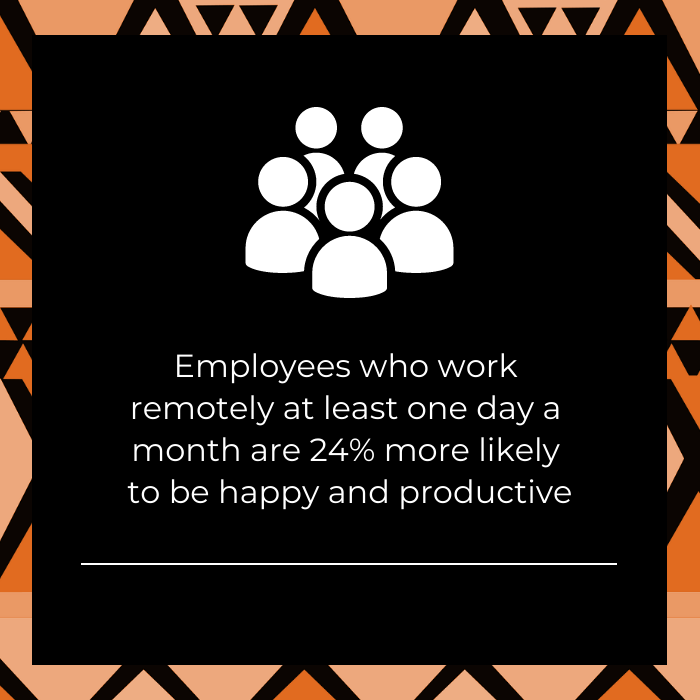As a hiring manager or business owner, finding and hiring new employees amid the coronavirus pandemic can be a difficult task. It can be challenging to assess candidates through video calls and phone interviews without any face-to-face interactions. How will you know if they can adjust to your company’s workflow? How can you assess if someone is a cultural fit without a face-to-face interaction? These are just a couple of the questions hiring managers are grappling with all across the country.
Luckily, there are plenty of steps you can take to make remote hiring much simpler and more convenient. Keep reading for our tips on hiring remote candidates, retaining employees, and increasing your company morale.
Create a strong company presence in the digital space
When you’re hiring locally, candidates might be familiar with your brand or they might even know people who work at your company. When you’re hiring remotely, that can all change. Suddenly, candidates are focused on your digital presence. If you haven’t put much time or money into your website, it can turn away potential candidates who might equate a poor company site as unprofessional. It’s important to avoid that situation if you don’t want to lose out on applicants.
Set up a website (or pay a professional to do so) that showcases your company’s successes, culture, and values. It will help a potential employee envision themselves as part of your team if you make people as your focus on your company page.
Your careers page should be up-to-date, informative, and list any standout benefits. Open positions should be clearly listed with comprehensive descriptions and salary ranges.

Offer unique benefits and strong compensation packages
Sure, medical benefits are an awesome perk to have and necessary – but you’re going to need a lot more than just medical and dental to lure in great talent. Instead, consider offering unique perks to your remote team. Here are just a few examples:
- Volunteer PTO
- Stipend for internet and utility costs
- Free company laptop
- Unlimited PTO
- Monthly care packages
- Mailed birthday presents
- Assisted housing benefits
- Virtual happy hours
- Flexible work schedule
Although you might be competing with large companies that have a big budget, you can still entice talent and retain old employees with unique benefits.
It’s also a good idea to consider your compensation packages for your remote employees. Will you pay all employees who do the same job the same salary? Or, will you adjust based on cost-of-living differences? You’ll need to find a happy balance to ensure your employees are paid fairly, commensurate with their experience.
Describe how you work
Remote employees often make their own schedule but they’re going to need a little more detail than that when they apply. Make sure you explain how flexible your company is and give insight into what a typical day is like at your company, especially during work from home.
For example, you can outline what project management software you use, what internal communication tools you use, and what workload an employee can expect week to week or seasonally.
Highlight employee reviews
When you’re deciding between two products, what’s the first thing you’re going to check to make a decision? Reviews. The same concept applies to your company.
You can successfully attract remote employees by highlighting the experiences of your existing remote workers. Ask your current remote team to answer a few relevant questions like why they wanted a remote position and the benefits of working from home.
These reviews can help candidates better assess whether your company is a good fit.

Tell potential employees about your values
People want to work for ethical companies. Make your company values clear on your main website pages and detail your diversity goals. Use inclusive language where possible and hone in on the “whys” of your company — rather than focusing on just your service or products.
Pay attention to your job description
Your company’s approach to communication matters, particularly when it comes to a job description. The job description is often a candidate’s first impression of a company. Ensure that it’s well written and not overwhelming (aka a giant list of tasks and responsibilities with no context). It’s also crucial that the language you use is neutral. Biased or gendered language can immediately turn off potential employees.
Put effort into your interviewing process
After you’ve filtered out the initial resumes and applications, you’ll have a smaller pool of applicants that you’ll need to vet further with a video interview and phone screen. It’s important to rely on the right communication tools to make your interviews easier for both you and the candidate.
Give your candidate necessary links and schedules well in advance so they can test out the technology in their own time. You should do the same to help the interview process go more smoothly. It’s also a good idea to give candidates a timeline of when they’ll know if they got the job.
Ask for referrals
When you’re looking for a new employee, asking your current employees for referrals is a great first step. Your top talent might know other professionals looking for employment. You might even want to set up a referral program to monetarily reward employees who recommend candidates who end up being hired.
Don’t forget about retention
After you make a remote hire, you might be tempted to pat yourself on the back and call it a day. Unfortunately, your job still isn’t done yet. Keeping your workforce happy is an ongoing project, one that takes time, effort, and money. If your employees don’t feel supported and respected, they are more likely to leave. That’s why a strong retention strategy is critical to implement.
To keep great employees around, make sure they have a support system that checks in with them regularly. It’s important to regularly take “temperature checks” of current employees to stop small issues from snowballing into huge problems that cause great employees to leave in search of greener pastures.
Wrapping up: Finding remote talent the right way
Although the pandemic has thrown HR departments across the country a major curveball, it’s also helped companies think outside of the box. Keep your interview process as streamlined as possible, offer fair compensation packages, and create a clear line of communication with potential employees. With these tips, you can build a reliable, productive remote workforce, one employee at a time. While making sure that you position yourself favorably to candidates, make sure you dedicate adequate time to ensuring that the candidates also have the habits and skill sets needed to be successful in the role.
Samantha Rupp
Samantha Rupp holds a Bachelor of Science in Business Administration and is the managing editor for 365businesstips.com. She lives in San Diego, California and enjoys spending time on the beach, reading up on current industry trends, and traveling.


